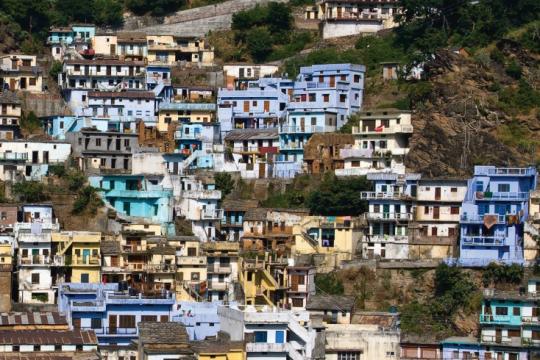 Losses due to disasters to human and physical capital are on the rise across the world. Over the past 30 years, total losses have tripled, amounting to $3.5 trillion. While the majority of these losses were experienced in OECD countries, the trend is increasingly moving towards losses in rapidly growing states.
Losses due to disasters to human and physical capital are on the rise across the world. Over the past 30 years, total losses have tripled, amounting to $3.5 trillion. While the majority of these losses were experienced in OECD countries, the trend is increasingly moving towards losses in rapidly growing states.
In a sense, increasing risk and losses caused by disaster are the byproduct of a positive trend - strong development gains and economic growth. This is because disaster loss is a function of the amount of human and physical assets exposed to seismic or hydrometeorological hazards, and the level of vulnerability of the assets. The richer a country gets, the more assets it builds or acquires, and therefore the more losses it potentially faces.
Rapid development across South Asia signals the need to commit greater efforts to increase resilience to disaster and climate risk. It also requires governments to develop a strategy to both protect against events today and to develop strategies to address the losses of the future. This is a challenge somewhat unique to South Asia. The losses of today, predominantly rural flooding that impacts wide swaths of vulnerable populations, will begin to diminish in relative importance to the losses of the future.
As half a billion people move from rural areas to cities over the next 25 years, the exposure of people and assets to urban disaster risk will increase exponentially. South Asia already has 65 cities of over a million people; Karachi, Mumbai, Delhi, Kolkata, and Dhaka are or will push the 20 million mark. Existing urban areas are not equipped with all the tools required for managing resilient development. As cities grow, urban losses will rise due to haphazard land use planning policies that do not always incorporate flood and landslide risk. For cities in seismic zones, such as Kathmandu, buildings and infrastructure that are not made resilient to earthquakes will compound the potential impact of seismic events.
The relationship between asset accumulation and disaster loss is not linear however. Exposure to hazards does not have to imply vulnerability to such events. Buildings and infrastructure can be constructed in a manner that makes them resistant to the impact of earthquakes, floods, landslides, and cyclones. Early warning systems can be put in place to promote the safety of exposed populations and ensure they are safe from the strongest impact of various events. Financial instruments can be put in place to protect government budgets, private companies, and households from the debilitating impacts of a major event.
How can vulnerability to disasters be managed in South Asia?
The first step is to understand and quantify the risk posed by disaster. Within governments, ministries of finance can be sensitized to the annual expected losses and the maximum probable loss they face. It is usually the case that this financial figure is grossly underestimated due to the reallocation of budgets at different levels of government from municipal to provincial to federal governments. Once these losses are aggregated, it becomes clear that disasters pose significant contingent liabilities that need to be managed and decreased.
To decrease disaster losses, a physical inventory of expected losses must be taken through risk assessments. A wide variety of both structural and nonstructural investments are possible. To reduce existing risk, physical investments can be made to retrofit critical infrastructure and to build protective infrastructure. To manage future risk, governments can improve land use planning policy and implementation as well as enforce safe construction stands for buildings and infrastructure.
Finally, how can decision makers make the most informed choices to efficiently reduce disaster risk, given political constraints and resource availability? An approach providing a menu of options across various sectors, and the associated economic rates of return for each intervention, will help decision makers compare the economic efficiency and political cost of various approaches.
Learn More
Website: Disaster Risk Management in South Asia
Feature Story: Investing Today to Increase Resilience to Tomorrow's Hazards
Report: Disaster Risk Management in South Asia - Regional Overview
Brief: Disaster Risk Management in South Asia - Regional Overview
Video: Disaster Risk Management in South Asia - Regional Overview (watch below)
Video: Disaster Risk Management in South Asia - Country Profiles


Join the Conversation